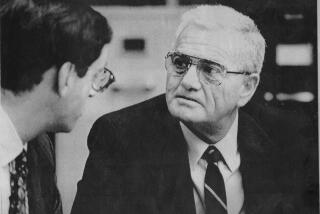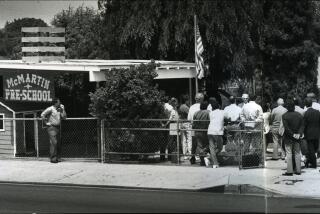Finding Truth in Child Abuse
- Share via
Roland Summit’s article (Editorial Pages, Feb. 5), “No One Invented McMartin ‘Secret,”’ provides an eloquent explanation of the techniques used by Kee MacFarlane and her colleagues in their work with sexually abused children, including those in the McMartin case, and supports the validity of these methods. Small children often amaze us with their capacity to remember earlier experiences. But the fears present at this age are often intense and make these children especially vulnerable to real or implied threats. Summit has shown us why these fears require systems of evaluation that are unique to this age group.
The methods used to help these children unburden their “secrets” are necessary and valid; unfortunately, the essential weakness of this case lies in the inability of our judicial system to understand and recognize that different criteria are necessary in listening to the evidence presented by young children.
There appears to be no adequate mechanism for bridging the gap between the experiences of small children and the requirements of an adult-oriented courtroom. But how can we hope to protect our children from harm when their own statements are given so little credence, and when those concerned specialists who have so effectively elicited their confidence are themselves attacked and essentially put on trial?
If our judicial system is to protect all its citizens, including its youngest ones, it must develop enough flexibility to allow for the needs of children so that they too may be heard.
Summit’s wise analysis deserves wider exposure, and should be read by anyone who wishes to understand the lessons of this tragic case.
LEONARD M. LIPMAN
Redondo Beach


